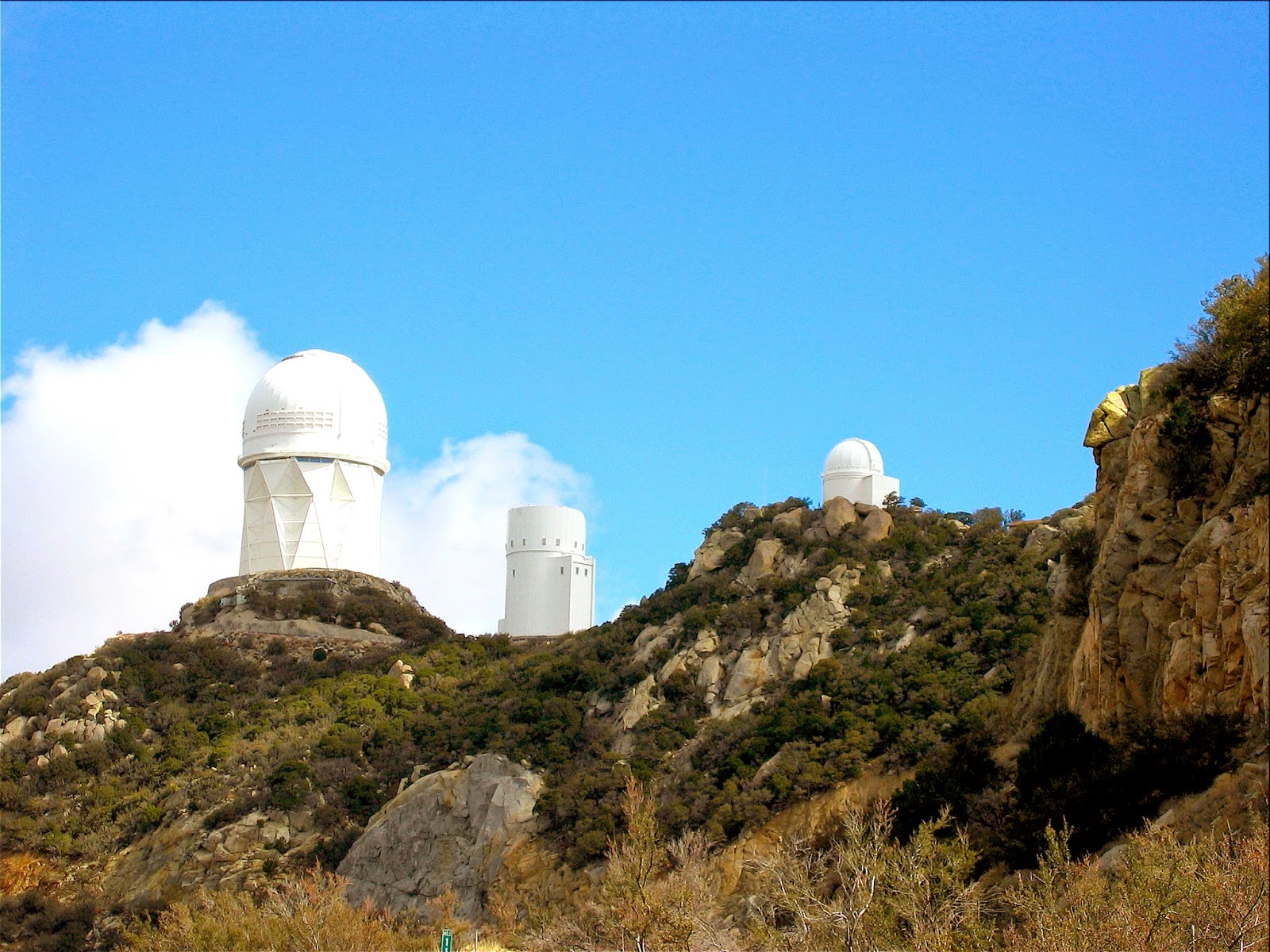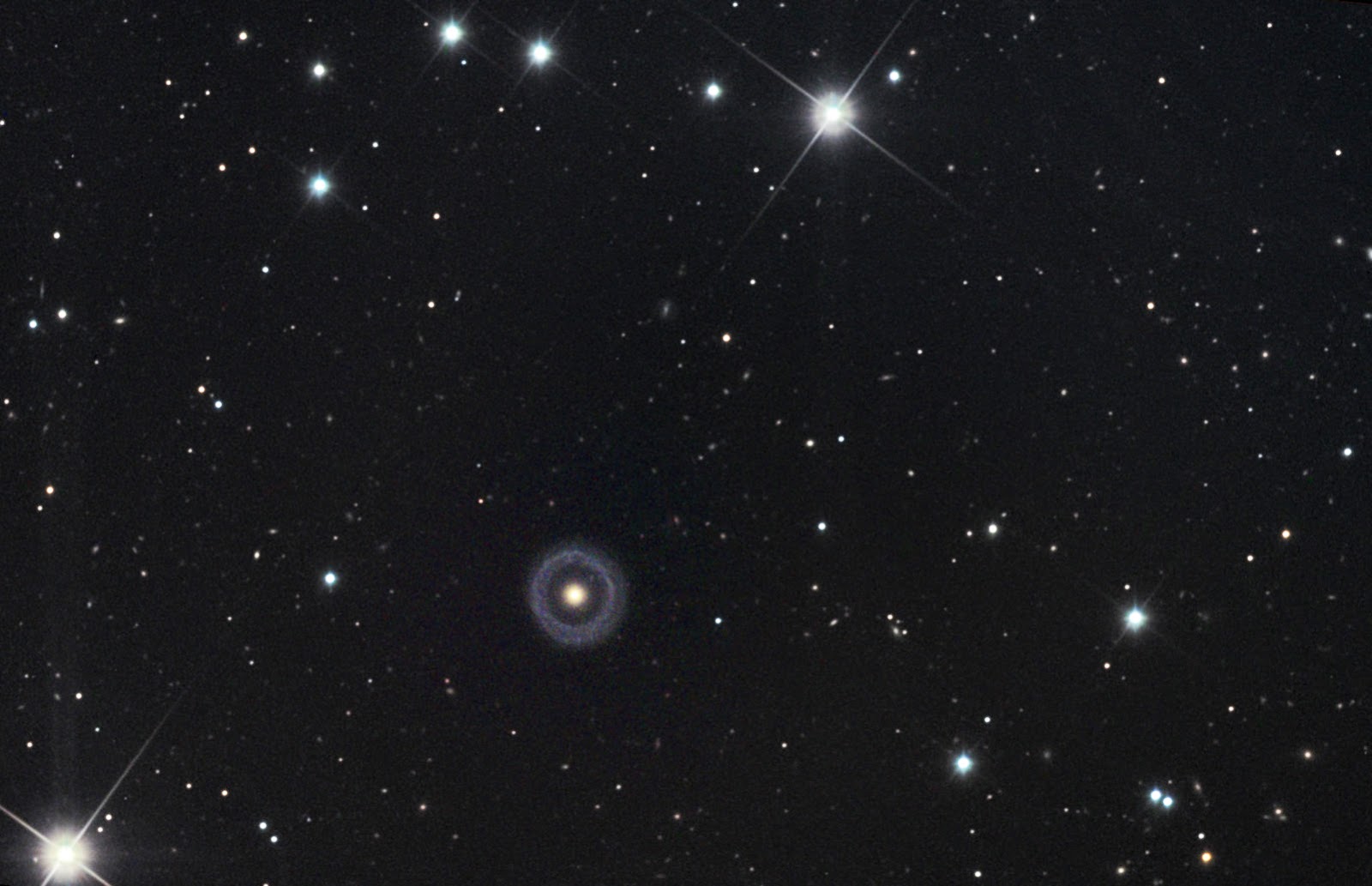Astronomy is a major scientific industry of Arizona. Eleven astronomical observatories are found in the small towns and high mountain tops scattered across Arizona. One of the most fascinating and enjoyable observatories to visit is Kitt Peak National Observatory located just 56 miles southwest of Tucson.
Kitt Peak National Observatory is a part of the National Optical Astronomy Observatory (NOAO) system. Here on the 6875 foot high mountain top located on the Tohono O’odham Reservation, is found the world’s largest and most diverse observatory with an amazing collection of nightime optical and infrared telescopes as well as the world’s largest solar telescope.
Twenty-four optical and two radio telescopes turn their scientific light-sensitive eyes toward the heavens found above the clear, dry Sonoran Desert sky. These delicate scientific “Long-eyes”, as they were called by the native people, are use by eight different astronomical research institutions under the National Science Foundation to search for the answers to the celestial universe.
It was after the launch of Sputnik in 1957 that American astronomers petitioned the federal government to build a national observatory to coordinate their heavenly research. Over 100 mountains in the western portion of the United States were considered as possible sites. Arizona’s own Kitt Peak was determined to be the most advantageous.
Astronomers cherished the high percentage of cloudless nights above Kitt Peak. In addition the atmosphere above Kitt Peak was found to be “remarkably steady” that provided the telescopes of Kitt Peak to have many nights of “excellent seeing!”
The high elevation and location is the middle of the Sonoran Desert meant that Kitt Peak most often was surrounded by an atmosphere with low levels of relative humidity which meant the delicate mirrors of the telescopes would remain clear of moisture.
Finally, the University of Arizona had a strong astronomy program that could provide the observatory with trained personnel and the small size of Tucson (1958) meant very little light pollution would reach the mountain top.
Construction of Kitt Peak National Observatory began May 5, 1958 with the facility’s dedication occurring on March 15, 1960. The array of telescopes open to the pubic to visit makes this Arizona mountain top an astronomer's Disneyland.
The McMath-Pierce Solar Telescope is the world’s largest solar instrument with a part of the telescope continuing into the mountain. The study of the structure of solar sunspots is a major focus of this instruments research.
The eighteen story Mayall Telescope can be seen from over fifty miles away. The dome of this instrument weighs 500 tons and the 15-ton primary mirror is polished to one millionth of an inch with a reflective aluminum coating one thousandth the thickness of a human hair.
Kitt Peak also made astronomical history when in 1980 its 91-centimeter reflector telescope became the first in the world assigned to seek and track near-earth asteroids. The “Spacewatch Project” continues each night to seek objects that might create a hazard for space flight and for the earth.
The “Long Eyes of Kitt Peak” are open to visitors every day of the year except Thanksgiving, Christmas and New Years. Arrangements can be made for visitors to join astronomers atop Kitt Peak and view the wonders of the nighttime sky. For anyone interested in the nightime sky, Kitt Peak is the crown jewel in America’s astronomical program.
Link - https://www.noao.edu/kpno/
Photos 1 - 7 were taken by our friend Ken Jackway at www.photoarizona.com; the remaining pictures are public domain photos and are courtesy of National Optical Astronomy Observatory



















No comments:
Post a Comment